Summary
Cowon Plenue L Portable Hi-Res Digital Audio Player REVIEW
So you’ve downsized and the stereo has to go, but you still need superb sound in your life. ANDREW BAKER finds a genuine solution.
$3599
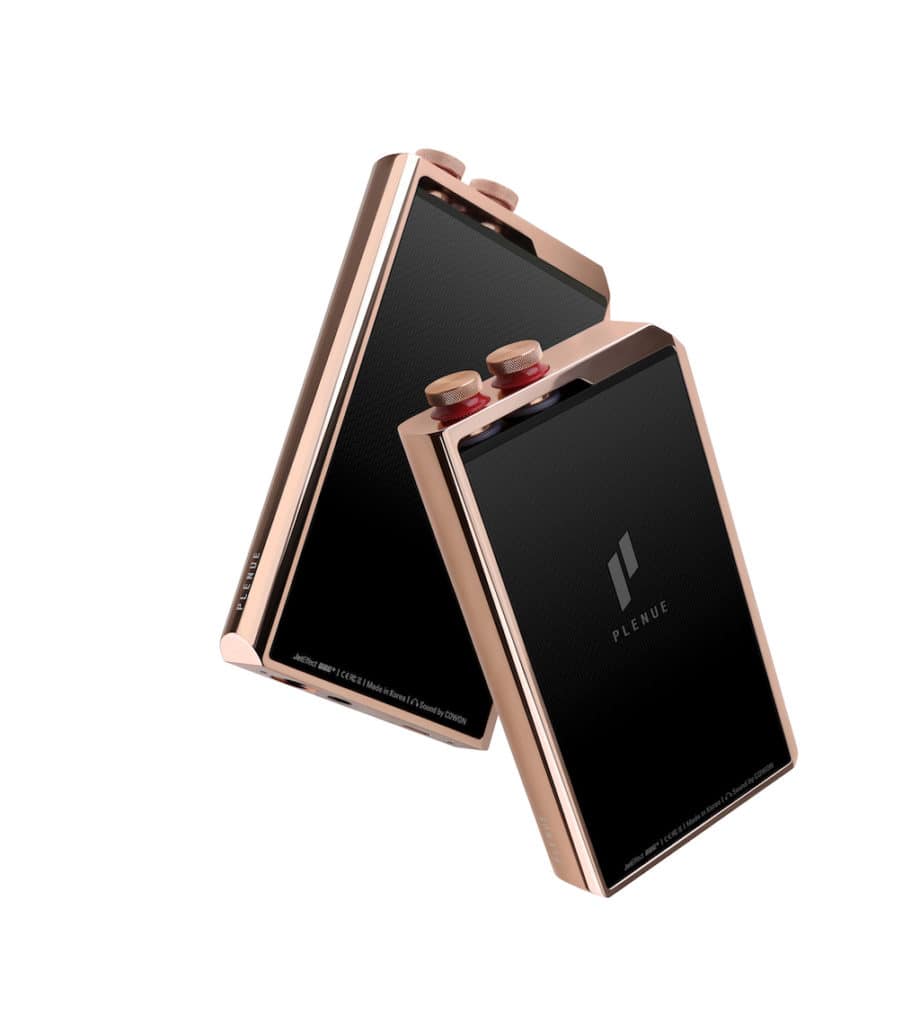
Music on the go usually means plugging a pair of IEMs or closed-back headphones into a smartphone or pairing it with wireless Bluetooth earphones. This limits you to the quality of the phone’s internal DAC which, a lot of the time, is not up to audiophile standards.
While there’s an array of mini-DACs and dongles you can use to get better sound out of your phone, some of us aren’t so keen on having all that extra stuff in our pockets. This is where a dedicated music player like a portable (away from, or around, the home) DAP becomes appealing. The impressive Plenue L is one such device.
Would you like to support our mission to bring intelligence, insight and great writing to entertainment journalism? Help to pay for the coffee that keeps our brains working and fingers typing just for you. Witchdoctor, entertainment for grownups. Your one-off (or monthly) $5 or $10 donation will support Witchdoctor.co.nz. and help us keep producing quality content. It’s really easy to donate, just click the ‘Become a supporter’ button below.
The Plenue L from South Korean company Cowon certainly looks and feels worthy of its high price tag. It comes nicely presented in a sturdy little square cardboard box with fold-up lid, lined with dense foam, and is supplied with a micro-USB cable and a protective case. The case, Italian red Dignis leather, slips on and off nicely and matches the Plenue in quality and visual appeal.

The Plenue L’s hefty high-gloss metal body comes standard in ‘Brass Gold’ colour and is CNC machined from a hybrid metal alloy and beautifully polished. It is said to represent the sound of brass instruments. It features a fairly decent sized 3.7-inch high-resolution AMOLED glass touch screen, which really looks quite stunning when in use, though I wish the full screen could be utilised for viewing album art.
You get a standard unbalanced 3.5mm headphone output which gives 2.1Vrms with an impedance of 0.9Ohms and a balanced 4.4mm Pentaconn output, which gives 4Vrms and an impedance of 1.8Ohms. Balanced output has better left and right channel separation, meaning crosstalk (the measurement given by Cowon for the Plenue L is -144dB) is greatly reduced, with better noise reduction as well as potentially sounding better than unbalanced. The 3.5mm headphone output can also be used as a digital out if, for instance, you want to use the DAP in a home stereo setup. Perhaps a balanced digital out would have been nice too.
There are operational buttons down the left side – power on/off, play/pause and skip forward/back – and this is also where the SD slot is located. Two control wheels on the top with dual LED status lighting operate volume and you get to choose what the second one does. Volume control, going up to 140, is incremental and so takes a lot of turning for significant sound level changes. Measuring 119.1mm x 67.9mm x 16.5mm (h x w x d) and weighing 199 grams, the Plenue L feels really nice in the hand, though the way the buttons and control wheels are set out, it felt easier for me to use with my left hand. It was slightly awkward trying to use the volume wheel and skip tracks with my right hand. I’m not going to lie: I do wish the wheels were on the right-hand side rather than on top, but this is far from being a deal-breaker.
There’s a generous 256GB of internal storage with the option of expanding this a further 256GB via the Micro SD card slot. The Plenue L does not connect to the internet and nor does it have Bluetooth. You can also forget about MQA.
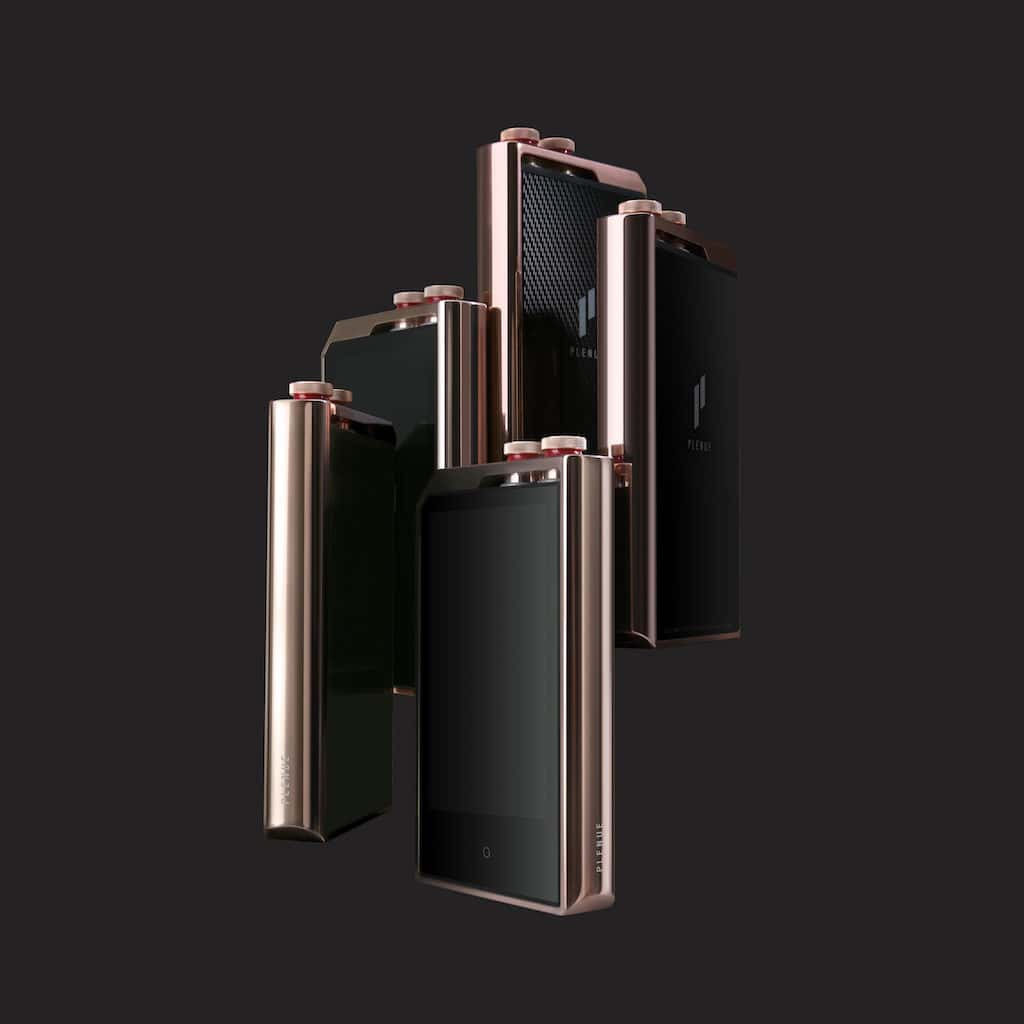
In order to load the Plenue with music, you connect it to a computer via the micro-USB cable and transfer files over. It accepts pretty much every file type, from MP3 to FLAC, and plays high-res files up to 32bit – 384KHz (PCM) as well as native DSD256 and DXD. The lithium-polymer battery gives around nine hours of playback for MP3s and 8.5 hours for FLAC and other high-res formats. Your mileage will of course vary but I found I easily got around eight hours non-stop play-back, and this included constant on-screen time, adjusting settings and general exploration. The firmware can be updated while the DAP is connected to a computer by simply downloading the software from the Cowon website.
The internal 8 channel DACs are a quad of top-of-the-line Ess Sabre Pro ES9038PRO DACs which help give a clear, noise-free sound. You can check out more specs online because there’s too much technical jargon for me to go into here. I can tell you there are 7 DAC filters, enabling users to fine-tune their sound preferences. I did give these a try and really didn’t hear anything significant, but you may have a different experience.
Amplification is handled by a Texas Instruments ‘SoundPlus’ high-voltage amplifier. With a max output of 4.05Vrms, it should have no problem driving most high-end high impedance headphones.
The user interface may seem a little quirky at first for those accustomed to smartphones but it’s really quite simple and doesn’t take too long to master. There’s a bit of tapping (or light touching) involved, though you can swipe to change tracks and scroll up and down through albums. Overall, it’s quite lovely to use and the display is crystal clear and easy to see and there are some custom options available. Operation is smooth and fast, thanks to the CPU which is a dual-core 1.2GHz ARM Cortex. Touching a thumb or finger on the album art brings it up to fill the top half of the screen, which is much easier to see though I would have liked to see it full screen. The bottom half displays track info and file type/bitrate info.
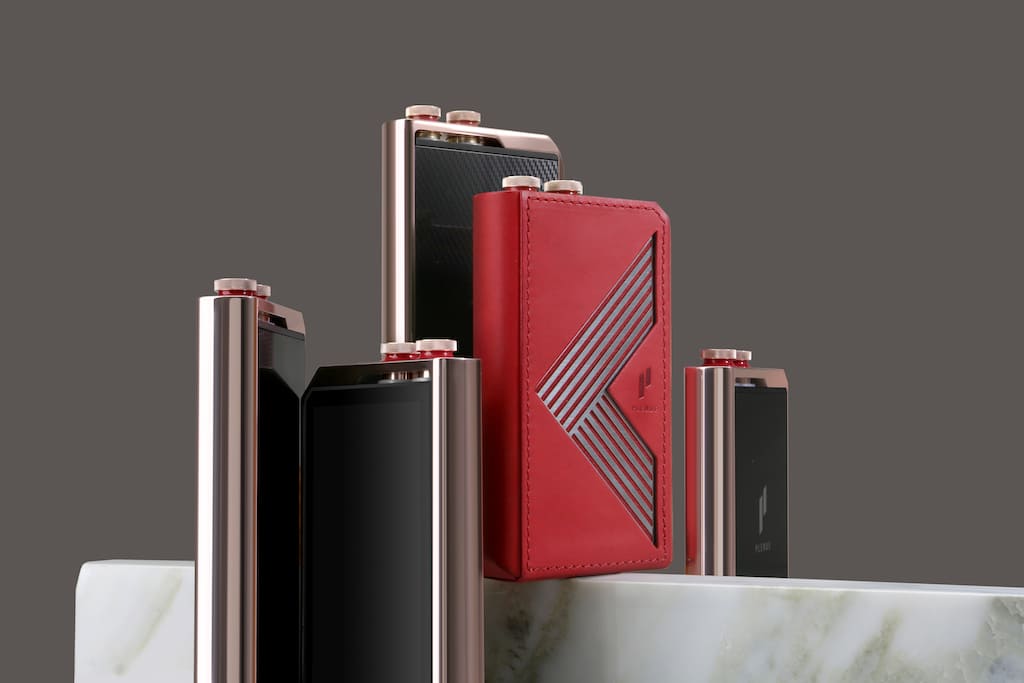
The Plenue L has an AI feature allowing users to let the DAP choose sound settings for them. ‘AI Volume’ keeps the volume consistent from track to track, album to album. ‘AI JetEffect’ randomly chooses the ‘best’ EQ setting based on the song genre and then there’s ‘AI Shuffle’, which I could only get to shuffle through one album, rather than randomly throughout the entire collection. I highly recommend leaving the ‘AI Volume’ on, otherwise you may be in for a nasty shock when going from light jazz to raucous hip hop or rock, or even different albums within the same genre, as volume levels can differ quite drastically.
If you like to choose your own EQ settings, you are in for a treat with the ‘JetEffect 7’ feature. Users get a swag of genre-based presets – such as Rock, Jazz, Blues, Hip Hop, et cetera – as well as ‘locational’ – Hall, Room, Chamber, etc. Along with these, you get various bass boost, phase correction, 3D and enhancement modes. Best of all, users can create and save their own EQ profiles with the use of a 10 band EQ filter. This was my preferred go-to, despite enjoying several of the presets. I won’t divulge my filter settings as they are purely subjective and also dependent on the headphones being employed. Incidentally, the presumably default ‘Normal’ setting was too flat and lifeless for my liking.
My daily use headphones are Sennheiser HD660S and I also have AKG K702s with Dekoni pads along with headphones from Beyerdynamic and HiFiMan. There are loads of IEMs currently on my ‘Must Try Soon’ list but I don’t have any on hand at the moment. My desktop amp, to which I listen daily, is a Drop+ THX AAA 789, known for its uncompromisingly clinical and ultra-clean solid-state presentation. This I pair with a rotation of DACs – MHDT, Electrocompaniet, FiiO – and the above-mentioned headphones, streaming Qobuz and Tidal via Roon or music files from my computer. I also have a beastly tube headphone amp in the living room which pairs beautifully with my Sennheisers. It gives a richly full-bodied sound with a touch of warmth giving a nice contrast to the solid-state THX amplifier. I tend to use my Samsung S9 when out and about with a pair of cheapie earphones but I will sometimes connect it to a FiiO K5 Pro at home. I use an app called USB Audio Player Pro to divert the signal from the phone’s internal DAC to the FiiO and it sounds pretty good.
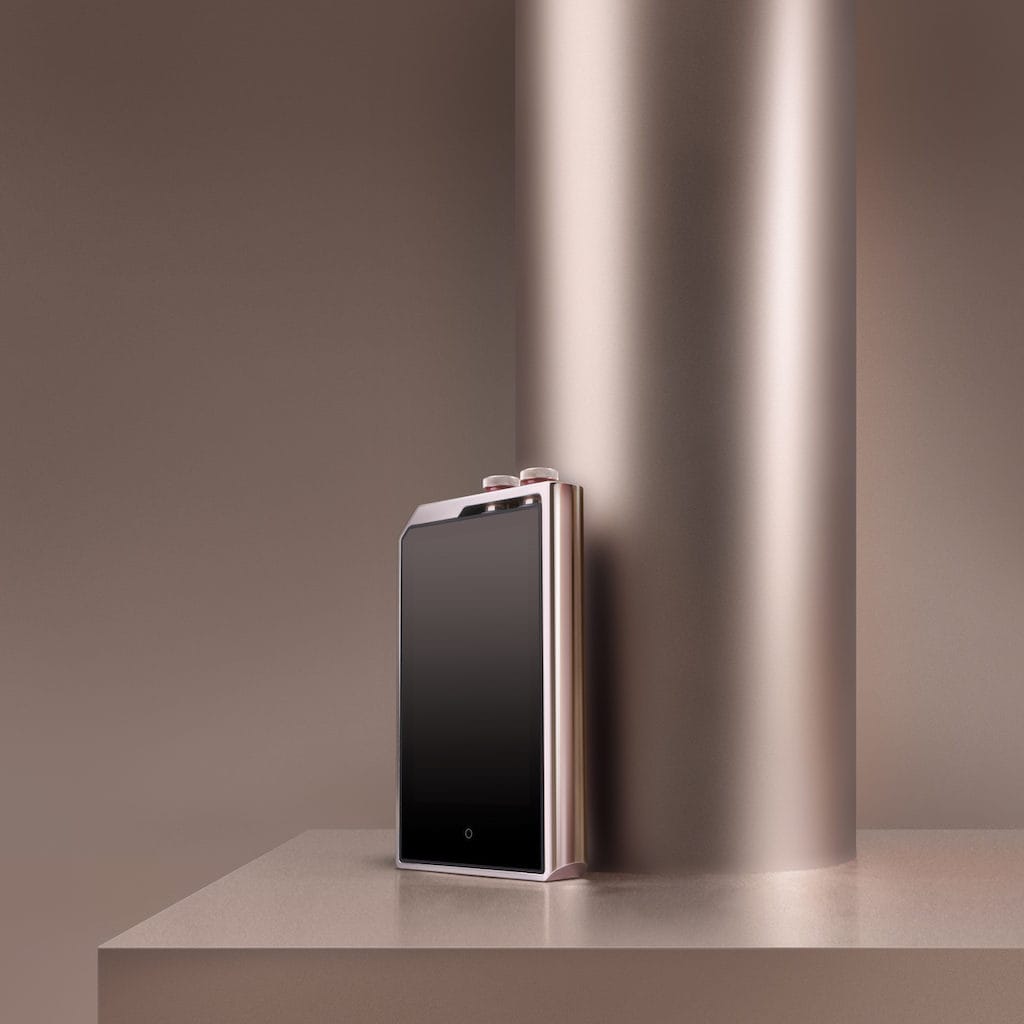
Straight off, the sound from the Plenue L was clean, crisp and immersive. Roughly neutral, it leans ever so slightly towards the warm side around the bass, which is no bad thing. ESS DACs are regarded as being analytical and perhaps a little bright but I didn’t notice any digital glare, even with my treble leaning K702s. The background was silent and completely free of any trace of hiss. Imaging and detail retrieval was excellent across my range of headphones, the soundstage pleasantly wide, and there was good portrayal of timbres. I enjoyed a rhythmic, punchy sound with a good frequency response across the spectrum. Bass didn’t go too low – though remember this can be boosted – but was punchy and clear. The mid-range was full-bodied, rich and open while the treble fast and snappy with nothing harsh offending the ears. Dynamics – the contrast between soft and loud sounds – were excellent, the Plenue providing pleasingly uncompressed sound.
On ‘I Am Trying To Break Your Heart’ from Wilco’s Yankee Hotel Foxtrot (2001, Nonesuch Records) the soundstage was agreeably wide with strummed guitars coming from far left and right and reminiscent of my loudspeaker system. This was the case even with my 660S’s, which already sound wider than some reviewers give them credit for. The bassline was solid and easy to follow and drums sounded robust and tuneful, with crisp metallic-sounding cymbal hits and a generally good dynamic range. Jeff Tweedy’s vocals were separated from the mix but not unnaturally so, the Plenue allowing me to hear all the emotion in his delivery while also giving the singer a sense of presence within my headspace. I also had a good sense of depth and layering aided by some skilful image separation and portrayal.
‘Goodbye J.D.’ from Oscar Peterson Trio’s We Get Requests (1964, Verve) flowed fast and agile with cracking snare hits and a great sense of space and scale. On ‘D & E’, the plucked double bass strings really stood out, resonating with the instrument’s body. Cymbal hits had a lovely almost ethereal nature as they kept time from behind my head and the piano had that tonally rich percussive quality.
The wonky minimalist techno of the Hauntologists’ self-titled collection (2015, Modular Cowboy) is ideal for headphones as it is packed with sonic trickery and atmospheric nuance. I’m no bass-head but the Plenue served up a good healthy dose of bottom end when required. Treble, as usual, was crisp and lively without overdoing it and the midrange was packed with textures and pleasing tones. Electronic blips, pulses and other such paraphernalia whizzed around my head with the main driving rhythm firmly in the centre. Even having been created digitally, there was still a good sense of space, layering and individual images. Again, not forgetting that at any point, you can add any amount more or less bass to your taste. Depending on your headphones’ abilities, you can do what you like.
I mostly have CD quality 16/44.1 FLAC files with a few higher-res files here and there (MQA, DSD and DXD don’t interest me) but I also have the odd MP3 floating around in my collection. Aldous Harding’s Party (2017, 4AD) which came as a free MP3 download with my vinyl copy of the album, sounded excellent with the Plenue L. I wasn’t perturbed by any particular loss of dynamics and Harding’s mercurial vocal was clear and detailed. The fact that it is a well-recorded and mastered album helps a bunch, of course, but it was no less enjoyable for being an MP3.
Using my Sennheiser HD660S headphones, swapping between balanced and single-ended, and maintaining the same volume level, there was a distinct and, on my part, unexpected sound difference. With balanced, it wasn’t necessarily louder as such, but there was just more. Bass seemed deeper and chunkier, details popped out of the mix with better clarity and everything just had more body and presence. Even unbalanced, the sound is superb, but if you can go balanced I highly recommend it.

My main indulgence is lengthy sessions listening to my 660Ss with an OTL tube headphone amplifier (measures terribly, sounds gorgeous and if I hear another YouTube reviewer describing a tube amp as sounding “gooey” I shall fold my arms furiously) but I found I could equally listen for hours to the Plenue L/660S combo, enjoying the crisp clarity and engaging musicality.
Compared to something like the THX AAA 789, the Plenue L has a slightly darker tone and it’s a touch recessed in the midrange, or perhaps it’s that the former is rather more forward. The 789 has a treble that sounds more lit-up and sparkly and I felt the soundstage is just a hint wider. Bass levels are on par though, but again, there’s a hint more warmth with the Plenue. These aren’t pros and cons, merely differences and I know the THX does not appeal to everyone. Considering what is packed into the little Plenue Ls case, the sound is pretty darn incredible.
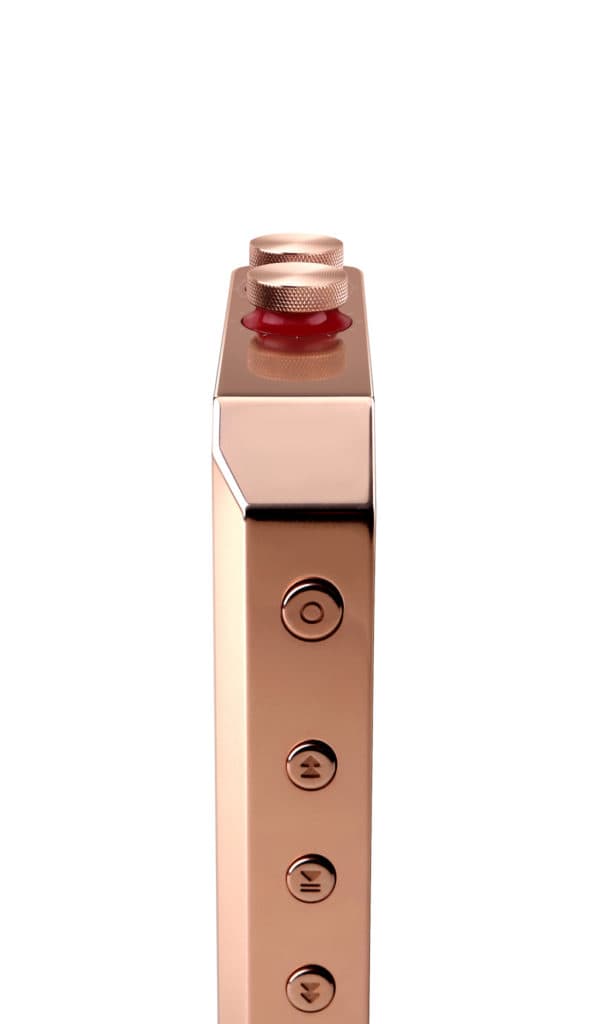
Conclusion
Expensive audio jewelry this may be, but the Plenue L happens to sound as immaculate as it looks. Dynamic, rhythmic, crystal clear sound with a detailed frequency range, this thing is a must for the discerning audiophile. Add decent headphones or IEMs – or even an amp and speakers – and you’re set. Stuffing your pocket full of cables, a dongle and a phone is probably cheaper, but as good as it may sound it’s not an option that appeals to everyone. There are cheaper DAP options but for those who like to aim high, the Plenue L is a worthy candidate.
Head-fi enthusiasts who enjoy EQ-ing their headphones should enjoy the Plenue L, especially with the multitude of options on offer. Once a setting is decided on, however, you’ll soon forget about everything else and just relax into the beautiful music.









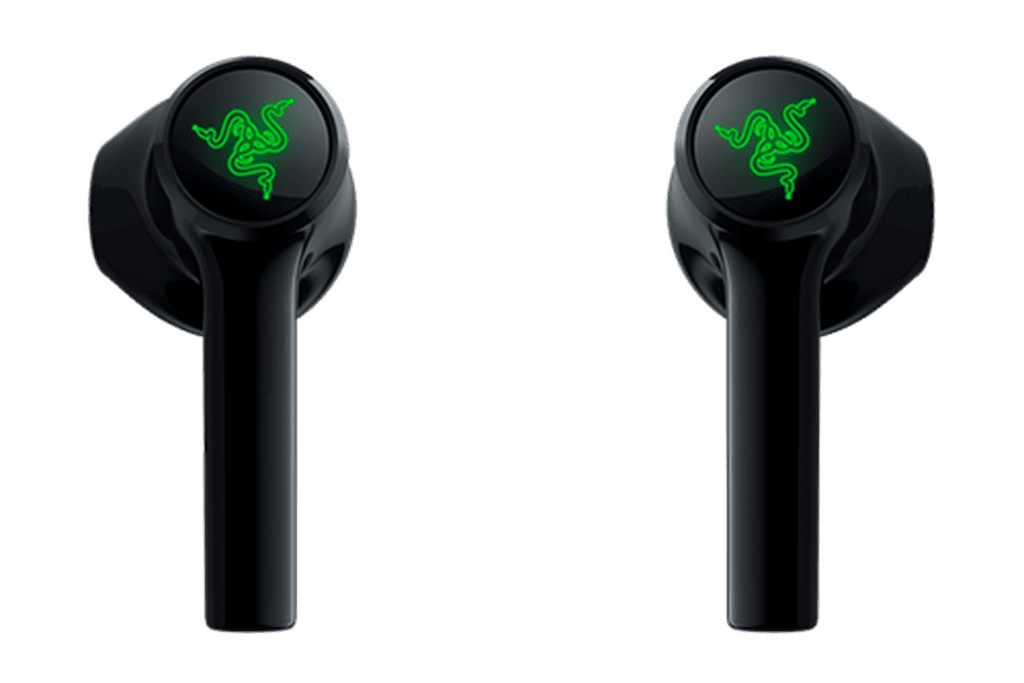







Wake me up when they have a competitor for the Fiio M5 and Shanling M0.